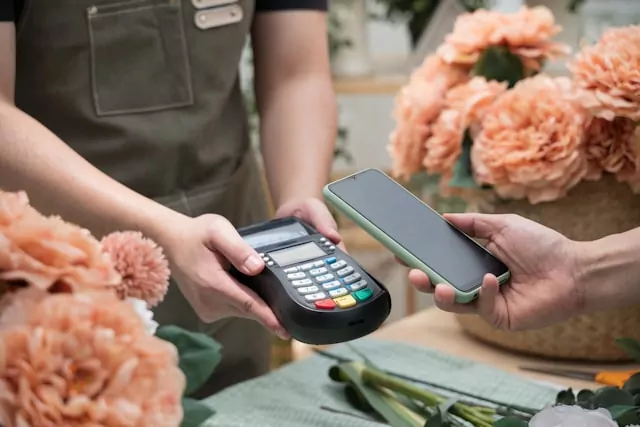We are rapidly getting closer to a cashless world. Our dependence on Cash has changed from cashless transactions to payments.
In recent years, digital payment apps have become increasingly popular due to their convenience, security, and ease of use.
Payment apps are a one-stop solution to the growing demand for fast, secure, and convenient digital payment solutions. As more people adopt smartphones and rely on digital technologies, payment apps are likely to become an increasingly important part of the financial ecosystem.
Cash App has emerged as one of the most popular in the market among the many payment apps available. It enables users to send and receive money, pay bills, and invest in stocks within a single app.
This article is about understanding payment apps’ benefits, features, latest statistics, and cost estimation.
Key Statistics Around Payment App
- As reported by Business Wire, the value of contactless payment transactions is expected to reach $10 trillion by 2027. Moreover, the global fintech market is also expected to reach $211.64 billion by 2027.
- Cash app has over 44 million monthly active users and over 100 million downloads.
- According to the source marketer, 1.31 billion people are assumed to use a mobile payment system for their cashless transactions by 2023.
- Between 2020–2025, mobile payments use will continue to increase with a 26.93% of CAGR.
- By 2024, the globally forecasted mobile payment market size is predicted to be 3 trillion.
- By 2026, the mobile wallet market is anticipated to get high to $80 billion.
What Is A Payment App?
A payment app is a mobile application that allows users to send and receive money electronically. It provides a convenient and easy way for users to complete transactions without the need for cash or checks. Payment apps use various methods to facilitate transactions, including bank transfers, credit or debit card payments, and peer-to-peer transfers.
To use a payment app, users typically need to create an account and link it to a bank account, credit card, or debit card. They can then use the app to send and receive payments to other users or businesses. Some payment apps also offer other features, such as paying bills, investing in stocks or cryptocurrency, or making purchases from online retailers.
How Does Payment Apps Work?
Here’s how a payment app typically works:
- User Creates an Account: To use a payment app, a user typically needs to create an account and provide some personal information, such as their name, address, and bank account or credit card information.
- User Links Their Account: Once the account is created, the user can link it to their bank account or credit/debit card. This allows them to send and receive money electronically.
- User Initiates a Transaction: To send money to someone else, the user typically needs to enter the recipient’s information, such as their name or phone number, and the amount they want to send. The app will then initiate the transaction.
- Payment is Processed: The payment app will then process the transaction, which may involve a bank transfer, a credit/debit card transaction, or a peer-to-peer transfer.
- The Recipient Receives Payment: Once the payment is processed, the recipient will receive the money in their own payment app account. They can then use the app to transfer the money to their bank account or use it to make purchases.
- Payment App Tracks Transactions: The payment app will keep a record of all transactions, which users can view and track over time. This can help users keep track of their finances and monitor their spending.
Benefits Of Payment Apps
Payment apps are used for managing personal finances and completing financial transactions in a fast and efficient way.
Payment apps offer a range of benefits to users, including:
- Convenience: Payment apps allow users to send and receive money quickly and easily, without the need for cash or checks. Users can make payments from their mobile devices, making it a convenient way to pay bills, split expenses, and more.
- Security: Payment apps use encryption and other security measures to protect user data and transactions. They typically offer two-factor authentication and other security features to prevent unauthorized access.
- Speed: Payment apps can transfer money almost instantly, which means that users can access their funds right away. This is especially useful in situations where a user needs access to funds quickly, such as to pay for an emergency expense.
- Lower Fees: Payment apps often charge lower fees than traditional banks or other financial institutions. For example, they may offer free transfers between users or charge a lower transaction fee than traditional wire transfers.
- Accessibility: Payment apps can be used by anyone with a smartphone or other mobile device, making them accessible to a wide range of users. This is especially useful for people who don’t have access to traditional banking services.
- Record-keeping: Payment apps keep a record of all transactions, which can be useful for budgeting and expense tracking. Users can easily review their transaction history and see where their money is going.

Features Of Payment Apps
As a digital payment platform, the Payment App should have a number of features that make it a popular choice for sending and receiving money. Some of the key features include:
#1- Peer-to-peer Money Transfer
This is at the heart of P2P app development based on payments. The application must have the transfer of funds in real-time between users and other people who are part of their contact list. It is also suggested to add the possibility of making QR-based payment options that are contactless for users.
#2- Wallets
Integrating the features included in your wallet inside the app is recommended to make transactions swift and simple. The wallet should also provide the option of paying through QR codes and transferring funds to contact numbers or the bank you prefer.
#3- Cash Card
The Cash card is a Visa debit card that can be used to pay for items and services using your Payment App balance shops and online. While it’s not essential at present because of the rising demand for Apple cards or Cash cards, this idea is expected to become the next major characteristic of Fintech applications developed with P2P technology.
#4- Multi-Account Type
Similar to Cash, applications can provide advantages for businesses and people. It has features and profiles tailored to match the amount of money you are acquiring and user segmentation.
#5- Multi-factor Authentication
Multi-factor authentication helps users to prevent unauthorized access and fraud and adds an extra layer of security to the payment app. It requires users to provide two or more pieces of evidence to confirm their identity before they can access their account or complete a transaction.
For this, users have to sign in using various options, such as OTP and email or biometric authentication.
#6- Link to Your Credit Cards and Accounts
Fintech app developers allow customers to link their credit cards and bank accounts to the app in a secure environment. The payment app lets users join several banks and card accounts in the application.
Advanced Features To Create An App That Is Similar To Cash
The business world is sure to expect more from apps constantly being developed. So, if you want to stand out and become an advantage, consider the advanced features necessary to include in a payment app like Cash.

01- In-app Payments
When you enable this feature, it allows your customers to pay for their goods and services directly from the app. This makes payment much easier for your customers.
02- Loyalty Programs
Businesses can use loyalty programs to reward loyal customers and encourage users to use their apps. This is an excellent option to improve your retention rate of clients and increase your profits.
03- Referral Programs
Referral programs are a great way to get new users and boost the popularity of your application. You can reward users who refer your app to their families and acquaintances.
04- Push Notifications
Push notifications are one of the best methods to keep your users updated on the latest features, special offers, or other updates. It is one of the best ways to ensure your users remain engaged in your app.
05- AI Chatbots
To provide 24/7 support to your clients, you can implement chatbots powered by artificial intelligence in your payment application. This isn’t only an opportunity to cut down on customer service costs but also improve your app’s overall user experience.
06- Digital Currency Exchange
Users can buy and sell digital currency via the payment app. This makes the app more attractive to people looking to invest in digital currency.
How Much Does It Cost To Develop A Payment App Like Cash App?
The cost to develop an app like Cash App can vary greatly depending on many factors, such as the complexity of the features, the platform(s) it will be developed for, the team size and location, and the development timeline.
Some of the key factors that can influence the cost of developing a payment app:
- Platform: Payment apps like the Cash app are available on both iOS and Android platforms, so developing an app for both platforms will cost more than just developing for one platform.
- Features: The cash App has many features, including money transfers, bill payments, and investing. The more complex the features, the more time and money it will take to develop the app.
- Design: A well-designed app can attract more users, so investing in a good UI/UX design is important. However, this can also increase the cost of development.
- Development Team: The development team’s size and location can impact the cost. Hiring a larger team or working with developers in more expensive regions can increase costs.
- Development Timeline: A longer development timeline will increase the development cost, as the team will need to work longer.
It’s best to consult with a professional payment app development company or payment app developer to get a more accurate estimate based on your specific requirements.
How Does An App Like Cash App Ensure The Application’s Security?
Payment apps contain several security elements designed to prevent fraud and hacks.
- A security lock based on PIN or TouchID
- Real-time notification of activity
- Two-factor authentication
- Instant freezing of card spending if the users lose a card.
Concluding Lines
Building a payment app like Cash App can be a complex and challenging process, but with the right strategy and approach, it can be a rewarding and lucrative business.
With the above-mentioned statistics, it is clear that payment apps have a great future ahead you can also invest in payment app development. For this, you should consult with a top-notch mobile app development company to create a successful payment app at reasonable price.
If you want to be at the top over your competitors, you must connect with Quytech- a renowned mobile app development company. We can create custom and customer-centric payment apps that help customers make faster and easier payments. We have specialization in developing top-notch payment apps.

Post Views: 3





















Discussion about this post